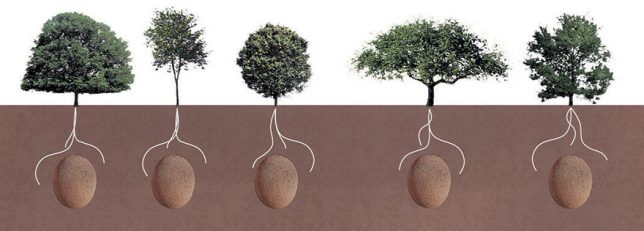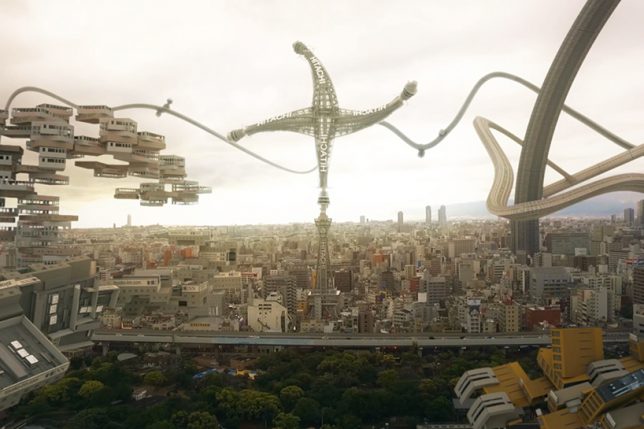$ (document).ready(function() { SampleGalleryV2({“containerId”:”embeddedSampleGallery_6905215642″,”galleryId”:”6905215642″,”isEmbeddedWidget”:true,”selectedImageIndex”:0,”isMobile”:false}) });
One question many people have when a new camera system is announced is ‘but will my old lenses work?’ In the case of the Nikon Z system, the answer is ‘yes’ in the vast majority of cases, with no reduction of image quality or performance, according to the company.
With the optional FTZ adapter over 90 AF-S lenses will be fully compatible with the Z 7 and Z 6. They can take advantage of the camera’s in-body image stabilization and, if you’re using a VR-equipped lens, it will have 5-axis stabilization. (Non-VR lenses will now have 3-axis VR.)
Take an in-depth look at the FTZ’s functionality and our initial performance impressions
The adapter supports the silent shooting and focus peaking functions of the Z-series cameras and, like the Z 7 and Z 6, it’s also weather-sealed.
The FTZ adapter will ship at the end of September for $ 249. When purchased with a Nikon Z 6 or Z 7 through December 31 2018, Nikon will offer a $ 100 discount.
Press Release
NIKON RELEASES THE NIKKOR Z 24-70mm f/4 S, NIKKOR Z 35mm f/1.8 S, NIKKOR Z 50mm f/1.8 S, AND THE MOUNT ADAPTER FTZ, AND DEVELOPS THE NIKKOR Z 58mm f/0.95 S NOCT
Designed Exclusively for the Nikon Z Mount System, Featuring a New, Larger-Diameter Mount
MELVILLE, NY (AUGUST 23, 2018 AT 1:01 A.M. EDT) – Nikon Inc. is pleased to announce the release of three new lenses designed for the next-generation Nikon Z mount system’s full-frame (Nikon FX format) mirrorless cameras, for which a new larger-diameter mount has been adopted. The three new lenses are the standard zoom NIKKOR Z 24-70mm f/4 S, the wide-angle prime NIKKOR Z 35mm f/1.8 S, and the standard prime NIKKOR Z 50mm f/1.8 S. Nikon has also announced the Mount Adapter FTZ for Z System compatibility with existing NIKKOR F mount lenses and development of the NIKKOR Z 58mm f/0.95 S Noct lens1.
NIKKOR Z lenses pursue a new dimension in optical performance, by taking advantage of the superior design flexibility made possible by the combination of the larger Z mount with its inner diameter of 55mm, and a short flange focal distance of 16mm. The lenses offer sharp resolution with both still-image and video recording, and are equipped with functions that include: compensation for focus breathing (the shifting of the angle of view when focus is adjusted), quiet operation, smooth exposure control, a control ring and performance that is well suited for video capture.
The NIKKOR Z 24-70mm f/4 S, NIKKOR Z 35mm f/1.8 S, and NIKKOR Z 50mm f/1.8 S are S-Line interchangeable lenses. The S-Line is a newly designated grade of NIKKOR Z lenses that adhere to a new benchmark in optical performance, realizing rendering performance that surpasses that of conventional f/4 standard zoom lenses and f/1.8 wide-angle or standard prime lenses. From maximum aperture, clear and sharp resolution can be achieved as well as beautiful bokeh characteristics.
Additionally, the Mount Adapter FTZ has been designed to allow users of Nikon SLR cameras to utilize their existing NIKKOR F mount lenses with the Z mount system and enjoy taking advantage of an even wider variety of lens characteristics with their photography.
Development of the NIKKOR Z 58mm f/0.95 S Noct
Nikon is currently developing the NIKKOR Z 58mm f/0.95 S Noct, a standard prime manual focus lens and the fastest lens in Nikon’s history. The design of the Noct lens exemplifies Nikon’s mission to pursue the ultimate optical performance in the mirrorless category. As the result, the Noct is positioned at the top of the S-Line. In addition, Nikon is planning on releasing a variety of new lenses that will continue to expand its line of attractive, high-performance NIKKOR Z lenses that further extend photographers’ creative expressions.
NIKKOR Z 24-70mm f/4 S Primary Features
- Standard focal-length range from wide-angle 24mm to medium-telephoto 70mm can effectively cover a wide variety of scenes and subjects with rendering performance that will change the perception of what is possible with zoom lenses with a maximum aperture of f/4
- Optical design that suppresses variations in aberrations from shooting distances of close-up to infinity, demonstrating sharp resolution even in the peripheral areas of the frame from the maximum aperture, as well as fine point-image reproduction
- Achieved a minimum focus distance of just 0.3 m across the zoom range
- Adoption of an ED glass element, an aspherical ED lens element, and three aspherical lens elements
- Nano Crystal Coat adopted to suppress ghosting and flare
- Has the size needed to deliver an extremely high standard of optical performance, yet provides outstanding portability; employs a retracting mechanism that can be set on/off without pressing a button and reduces total length for a compact lens that can easily be taken anywhere
- In consideration to a dust- and drip-resistance, the entire lens, including moving parts, has been sealed
- Fluorine coat applied to front lens surface
NIKKOR Z 35mm f/1.8 S Primary Features
- Rendering performance that redefines perceptions of what a 35 mm f/1.8 lens can do
- Sharp resolution even in the peripheral areas of the frame from the maximum aperture, effective suppression of sagittal coma flare that enables superb point-image reproduction when capturing point light sources in night landscapes, and the soft and natural bokeh characteristics expected of a fast (bright) lens
- Adoption of a new multi-focusing system featuring two AF drive units providing driving power at high speed and with high accuracy that achieves quiet, fast, and accurate AF control, as well as high image-forming performance at any focus distance
- Adoption of two ED glass elements, and three aspherical lens elements
- Nano Crystal Coat adopted to suppress ghosting and flare
- In consideration to a dust- and drip-resistance, the entire lens, including moving parts, has been sealed
NIKKOR Z 50 mm f/1.8 S Primary Features
- Superior rendering ignites creativity, and redefines perceptions of what a 50mm f/1.8 lens can do
- Thorough suppression of axial chromatic aberration ensures superior resolution with faithful reproduction of the fine textures in subjects, even from maximum aperture
- Sharp and clear rendering of details from the center of the frame to the peripheral edges, regardless of the shooting distance
- The soft and beautiful bokeh characteristics at any shooting distance possible only with a fast (bright) lens
- Adoption of two ED glass, and two aspherical lens elements
- Nano Crystal Coat adopted to suppress ghosting and flare
- Adoption of a new, powerful stepping motor (STM) enables quiet and accurate AF control during both still-image capture and video recording
- In consideration to a dust- and drip-resistance, the entire lens, including moving parts, has been sealed
Mount Adapter FTZ Primary Features
- Full compatibility with more than 90 lenses and functionality with approximately 360 existing NIKKOR F lenses from AI type onwards2
- The unique characteristics of NIKKOR F mount lenses can be applied to Z mount system image quality
- In-camera VR (Vibration Reduction) with three-axis VR is available when attaching a NIKKOR F lens without built-in VR; in-camera VR also performs well with stills and video recording
- When attaching a NIKKOR F lens with built-in VR, lens VR and in-camera VR effectively work together to compensate for camera shake by enabling three-axis VR.
- Various sections of the adapter are effectively sealed to ensure dust- and drip-resistant performance equivalent to that of NIKKOR F lenses
- Designed to be lightweight yet tough with consideration for superior operability as a part of a complete system
Development of the New NIKKOR Z 58mm f/0.95 S Noct Lens that Pursues Ultimate Optical Performance
The NIKKOR Z 58mm f/0.95 S Noct that Nikon is currently developing will be a large aperture, standard 58mm prime focal-length, the fastest lens in Nikon’s history3, manual-focus lens positioned at the very top of the S-Line. It will stand to symbolize the Nikon Z mount system’s new dimension in optical performance.
It has inherited the design concept behind the original AI Noct-NIKKOR 58mm f/1.2, a standard prime lens released in 1977, named for “Nocturne” (a musical composition inspired by or evocative of the night), and was popular for its ability to finely reproduce point light sources as point images. This new Noct lens that is currently in development will take advantage of the advanced design flexibility afforded by the Z mount, pursuing ultimate optical performance. Development continues with the goals of achieving an extremely fast maximum aperture of f/0.95, offering the ultimate in NIKKOR rendering performance with superior detail and sharpness. Additionally, the goal is to achieve beautiful blur characteristics, or bokeh, with good continuity, and ensure outstanding point-image reproduction capabilities for more compelling, three-dimensional imaging.
The NIKKOR Z Lens Roadmap
Information in the roadmap, including release dates, are subject to change. Product names after the NIKKOR Z 58mm f/0.95 S Noct are not yet finalized.
Price and Availability
The NIKKOR Z 24-70mm f/4 S and NIKKOR Z 35mm f/1.8 S will be available September 27 for the suggested retail prices (SRP) of $ 999.95* and $ 849.95*, respectively. The NIKKOR Z 50mm f/1.8 S lens will be available in late October for the SRP of $ 599.95*. The Mount Adapter FTZ will be available September 27 for $ 249.95* SRP (Additional $ 100 savings when purchased together with a Z 7 or Z 6, through 12/31/2018). For more information on these and other Nikon products, please visit www.nikonusa.com.
Articles: Digital Photography Review (dpreview.com)




































You must be logged in to post a comment.